Do you have a bad knee? A little stiff and sore particularly after exercise? You might want to look into knee physiotherapy for help with restoring flexibility and range of movement.
The knee joint has been studied extensively due to the high incidence of knee injuries in sport, and with early intervention the management of knee pain and injuries through simple measures can be extremely effective.
The knee is one of the most important and complex joints in the body. The central point for four major bones, fourteen ligaments and several key muscle groups, the knee can be a troublesome area for many people. Though often a common sports injury, knee injuries can occur many ways; including simple wear and tear of the bone, muscle or tissue.
Specific conditions: Patellar Tendinopathies, Knee Osteoarthritis, Runner’s Knee, Pain at the back of the Knee, Clicking Knees, Osgood Schlatter’s Disease, Knee Fat Pad Impingement
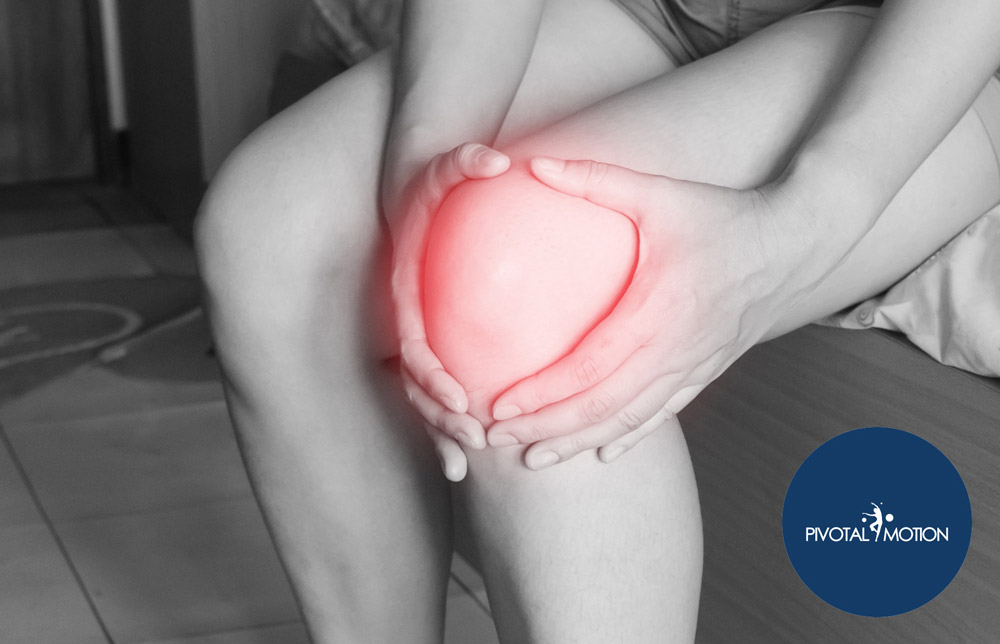
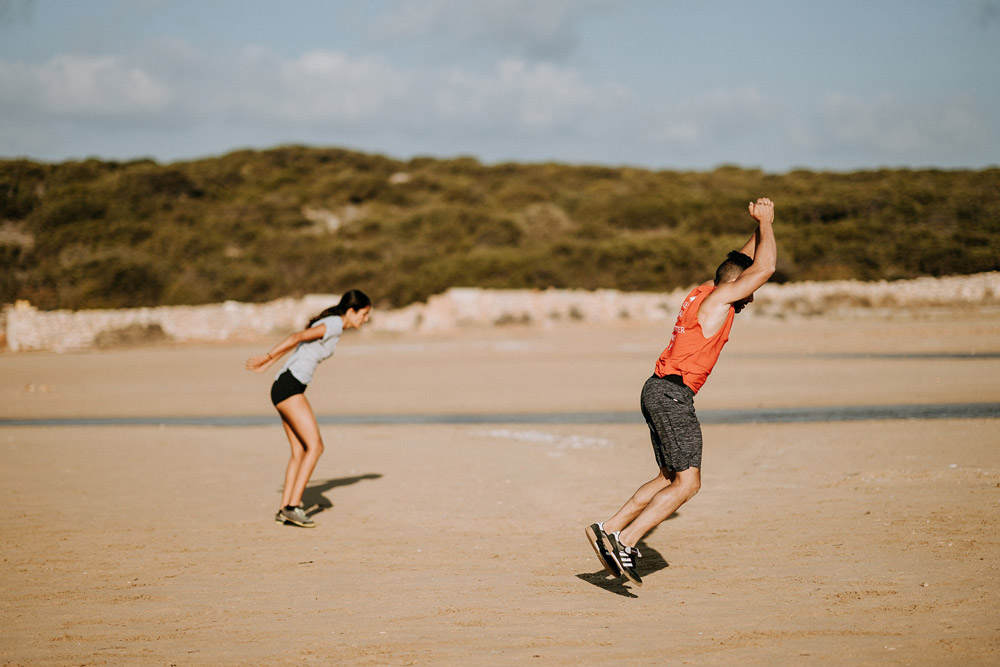
PRIMARY FUNCTION OF THE KNEE
Integral for support and movement, the knee is a central aspect of our locomotive and balance control. Due to the many muscle attachments and position in the body, our knees are important for when we walk, run, jump or just live. The knee’s structure allows for our gait pattern and is the reason that humans, amongst hundreds of primates, can sustain consistent standing on two legs.
Due to its position as the ‘hinge’ of the leg and our patella (kneecap), the knee helps make locomotion more efficient and effective as when it bends, then extends, during walking it decreases the energy required for the movement.
Integral also for support, the knee joint is responsible for force transmission during movements of the lower limb and when standing. As there is a large amount of movement available through the lower limb, there is also a lot of force transmitted through it. When we are standing, or plant our foot during gait, a force is sent up the leg from its pressure on the ground.
To reduce pressure on the bones, this force is transmitted up the leg through the knee where it is absorbed and dissipates to ensure that unnecessary pressure isn’t placed on the ankles or hips.
KNEE INJURIES & SYMPTOMS
Simply due to the large role it plays in allowing the body to function properly, the knee can be one of the most commonly injured body parts. From major ligament damage and worn cartilage to bone fractures, the knee can cause a severe limitation of day-to-day living if injured. The knee’s complexity and significance to movement make knee rehabilitation important to restoring functionality and well-being.
A complex anatomical structure, the knee joint is primarily made up of a capsule and is then surrounded by muscular attachments which make up its wider anatomy and can cause a range of further issues.
PATELLA
The anterior aspect of the knee joint complex is made up by the patella, a small, flat (sesamoid) bone embedded in the tendon linking the thigh muscles, quadriceps, with the lower leg.
The patella is very important in locomotion, as it increases the moment arm of the quadriceps to allow greater efficiency of movement. It also provides some protection for the internal parts of the knee.
SOME COMMON PATELLA INJURIES INCLUDE:
Sinding-Larsen-Johansson Syndrome an osteochondrosis condition similarly to Osgood-Schlatter’s Disease, caused by a fault in the development of the growth centres of the bone.
Ligament or tendon ruptures will present with inflammation, swelling and pain through the tendon and joint; sometimes fractures of the patella occur as well, with symptoms being severe pain, tenderness, swelling, deformation and an inability to move the knee. For further information check out our page on Patella Tendinopathies.
Patella dislocation is a common injury in sport, whereby the patella is displaced from its usual position at the front of the knee due to a tearing of the connective tissue around it. Dislocation is often caused by excessive force being placed through the patella, either by direct trauma or landing or twisting movements.
Symptoms include intense pain at the site of the injury, displacement/deformation of the patella and knee, swelling and lack of weight bearing ability and limited range of motion. Undergoing physiotherapy for knee pain can help improve strength, increase functionality and reduce pain.
KNEE JOINT CAPSULE
The actual joint capsule of the knee is specifically structured to perform its function, with menisci dissipating load and a range of ligaments to prevent excessive, unnatural movements.
MENISCI
The menisci are small pads of fibrocartilage located on the tibial plateau (area at the top of the shin bone), between the head of the femur and the tibia. Menisci help to distribute loading through the knee and facilitate movement by absorbing the force travelling through the knee.
A meniscus injury will usually occur when the knee is twisted whilst is in slight flexion. It can occur with ligament tear or in isolation, with the medial meniscus more regularly torn. Menisci will also degenerate with age, especially if there has been arthroscopies or meniscal cleaning earlier in life.
Common symptoms of a meniscal injury are swelling, pain and tenderness at the joint, limited range of motion, poor weight bearing in the injured knee and a feeling that it catches or locks when moving. Physiotherapy for knee injuries involving the menisci can help increase load tolerance and decrease discomfort.
LIGAMENTS
The ligaments of the knee work to contain movement to its natural plane. There are two main groups of ligaments in the knee; the intra- (inside) and extra- (outside) capsular ligaments.
INTRA-CAPSULAR LIGAMENTS
The intra-capsular group is made up of the anterior and posterior cruciate ligaments which each prevent excessive deviation of the shin bone (relative to the thigh bone) in their respective directions.
ANTERIOR CRUCIATE LIGAMENT (ACL) INJURIES
A common sporting injury, ACL ruptures often occur due to fast decelerating, rotational movements or hyperextension such as in a quick change of direction. The injury is often signalled by a popping feeling in the joint, severe pain, inability to continue activity and no weight bearing capacity in leg, swelling and loss of range of motion.
The ACL is a complex injury and often the mechanism and likelihood of a tear can be dictated by certain factors. These include:
- Sex (ACL tears are proportionately more common in females, especially those playing a sports requiring fast changes of direction or with high impact).
- Age (peak height velocity and hormonal changes, in conjunction with involvement in sports can mean increased risk of ACL rupture).
- Muscular tightness, imbalances or weakness (especially core, pelvic and thigh muscles).
- Joint stiffness.
- History of ACL tear, partial or complete.
- Poor biomechanics (incorrect technique or movement patterns).
- Hypermobility (increased laxity of ligaments).
- Activity environment (bad surface and footwear – low levels of support can contribute to increased pressure on ligaments and joints).
- Pregnancy (changes in hormone levels and preparation for the birthing process, joint laxity increases and if not managed properly can increase risk of joint injuries).
- Obesity or being overweight.
The prevalence of ACL injuries can be increased in adolescent populations due to periods of peak height velocity and the hormonal changes of puberty. As this is also a time when a large amount of activity habits are made, the risk of injury, and especially ACL injury, can be minimised through correct loading, form improvement and exercise programs designed to remedy imbalances and weaknesses.
This is a key focus of our adolescent strength and conditioning class which aims to instil good exercise habits and to minimise any risk of injury, and the need for knee physiotherapy, in the future.
POSTERIOR CRUCIATE LIGAMENT (PCL) INJURIES
A person’s PCL is generally stronger than their ACL so the mechanism of injury, whilst possible through hyperextension or rotation, is most often caused by significant force application to the proximal tibia (top of the shin). PCL injuries can often go unrecognised as due to its strength, these injuries are less common. Symptoms of a PCL tear include low to moderate pain, swelling and a feeling of instability or looseness within the joint.
EXTRA-CAPSULAR LIGAMENTS OF THE KNEE
The extra capsular ligaments of the knee are important for maintaining the relative positions of the bones of the knee in space and during movement. The medial (tibial) and lateral (fibular) collateral ligaments are responsible for providing ligamentous attachment between the femur and the relative lower leg bone. The ligaments functional purpose is to prevent valgus (outside to in) and varus (inside to out) forces from separating the bones of the knee and increasing the angles between them, and to limit twisting movements.
MEDIAL/TIBIAL COLLATERAL LIGAMENT (MCL)
MCL tear is another common sports injury and is often caused by excessive twisting movement when weight bearing or significant valgus (inwards) force which stresses the MCL beyond its resistive capacity. Injury generally occurs due to an isolated incident however it can be degraded and gradually torn through activities such as breaststroke. MCL is often an injury which can accompany a catastrophic ACL rupture. Symptoms of an MCL tear include a snapping sound and feeling, acute pain and swelling, limited range of motion and the feeling of the knee going in and out.
LATERAL/FIBULAR COLLATERAL LIGAMENT (LCL)
LCL tear also is a common injury in sports. Similarly, to the MCL, it is often caused by excessive twisting, generally when weight bearing, or varus forces, such as collision to the inner knee, greater than the ligament can resist. LCL rupture can be signalled by a perceivable tear sound with symptoms including acute pain (localized to outside of knee), swelling, stiffness, limited range of motion and the feeling that the knee is going in and out.
PATELLA LIGAMENT/TENDON
The patella ligament, also known as the patella tendon is the ligamentous attachment between the patella and top of the shin (tibia). Though technically a ligament due to its attachments being bone to bone, there is some confusion in addressing this structure, as it is continuous from the quadriceps tendon which attaches the quads to the knee. This may cause some differences in how different physiotherapists will refer to it. Rupture of the patella ligament often occurs due to high forces being applied directly to the site of the ligament, or when force is laced through the leg in a bent position, such as landing from a jump. Symptoms of a patella ligament rupture include translation of the patella up the thigh, an indentation below the usual area of the kneecap, swelling, tenderness, lack of weight-bearing capacity and cramping.
MANAGEMENT OF LIGAMENT INJURIES
Ligaments form a crucial structural role in joints so any major compromise to them, can severely affect function. The first step in managing any knee ligament injury is determining the severity. A trip to your physiotherapist is worthwhile because they can assess the knee and determine if knee rehabilitation is necessary. If deemed a grade 3 ligament rupture, your physiotherapist will refer you for an MRI scan to further determine the damage and then to an orthopaedic specialist for a surgical review.
Depending on the surgical review, surgery can be opted for. This is when the knee is deemed unsafe to use due to the degree of damage. Your surgeon will weigh in all the pros and cons before giving the formal recommendation for surgery.
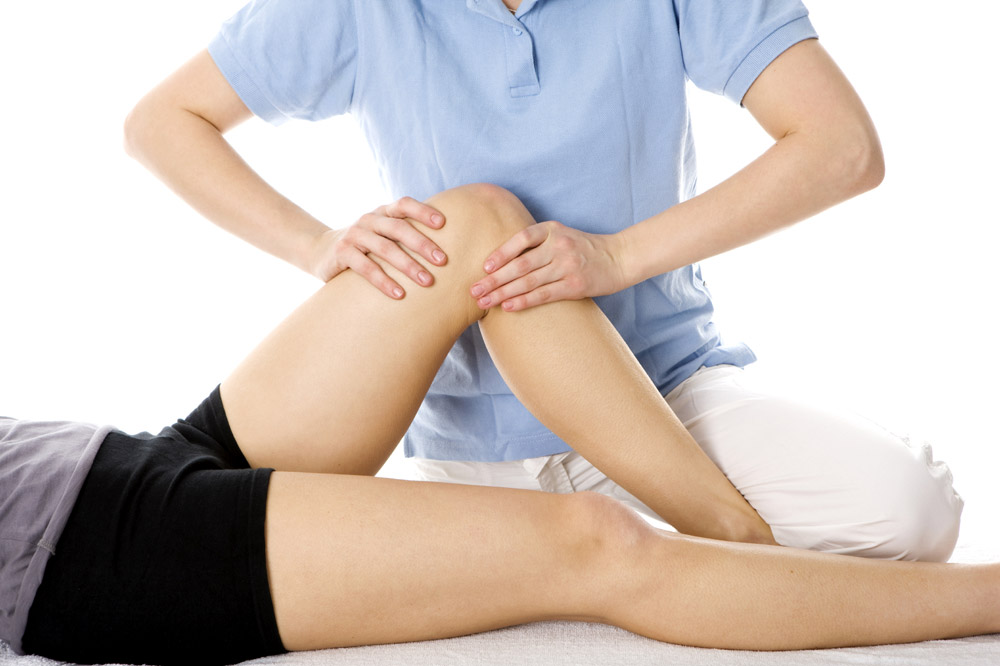
Grades of Ligament Injuries:
- A grade 1 ligament sprain is a few fibres ruptured. There is often minimal to no swelling involved and only a mild loss of function i.e pain with moving the joint but no great loss in range or strength. This typically takes 3-6 weeks to fully recover.
- A grade 2 ligament sprain is a partial rupture. There is mild to moderate swelling involved and a more severe loss of function i.e limping or inability to achieve full range. These types of sprains may take 4-8 weeks to fully recover.
- A grade 3 ligament sprain is a full rupture. There is often a large amount of swelling and a severe loss of function. These sprains may require surgical repair particularly if they involve the ACL (Anterior Cruciate Ligament). Any suspected grade 3 tears warrant an orthopaedic review and further investigations.
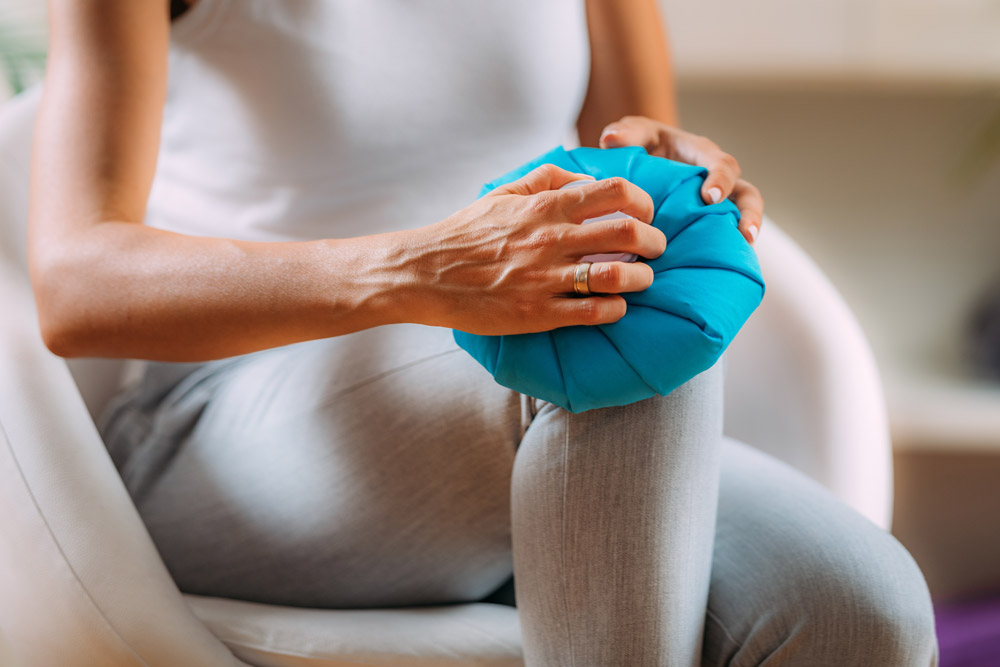
IMMEDIATE MANAGEMENT:
Despite the level of injury, there are basic principles that can be applied with regards to management immediately following an injury.
The R.I.C.E regime is appropriate in the acute phase of an injury. This includes:
- Rest – Immediate halting of the sport/activity that caused the injury and resting from this until the level of pain and swelling (if any) decreases.
- Ice – applying ice to the knee to reduce the amount of swelling.
- Compression – Applying a compression stocking or strapping to the knee to support the knee and control swelling.
- Elevate – if any swelling is present, elevate the knee above heart level to reduce the amount of fluid in the knee.
GENTLE RANGE OF MOTION AND STRENGTHENING EXERCISES:
The acute (early) phase of an injury generally lasts 3 days to a week. The R.I.C.E regime should be applied in this phase and once the past the acute phase, there should be a significant reduction in pain and swelling. This is now the subacute phase where some gentle range of motion and strength work can be permitted. We advise you to seek the professional advice of your physio before doing any of these exercises listed.
- Range of Motion knee extension and flexion: Sit on the edge of a bed or on a chair with your legs dangling and alternately bend and straighten the knee.
- Quads setting: In sitting or lying with the knee straight, fully extend the knee and tighten the quads. Hold this for 5-10 seconds at a time.
- Bridging: In crook lying (on your back with knees bent and feet flat on the bed), lift your bottom off the bed and hold for 5-10 seconds at a time.
- Calf Raise: In standing, gently raise the heels off the ground. Hold for 5-10 seconds at a time.
- Wall sits: With your back against a wall, slowly squat down to a 45 degree knee angle and hold for 10-20 seconds or as tolerated.
- Clam shells: Starting in side lying with a resistance band around the knees and knees bent to 90 degrees, lift the top knee of the bottom knee while keeping the feet together.
PROPER PHYSIOTHERAPY REHAB:
To get to 100% full functional capacity, we highly recommend seeing a physiotherapist. Receiving physiotherapy for knee pain can be an involved approach and they will guide you through each step of the rehab process. Goals to tick off with rehab include:
- No pain or swelling in the joint.
- Full knee active and passive range of motion.
- Grade 5 strength in the surrounding musculature (quads, hamstrings, calf, glutes)
- Sufficient proprioception (our body’s ability to detect the position of different body parts in space) and balance.
- Full functional return – this means getting back to normal activities of daily living, work duties and physical activity.
Rehab is always goal oriented. An elderly person with low levels of activity will have slightly different goals to a teenage athlete. Therefore, each individual will have a separate rehab milestone checklist. Either way, your physiotherapist will help you achieve all these goals.
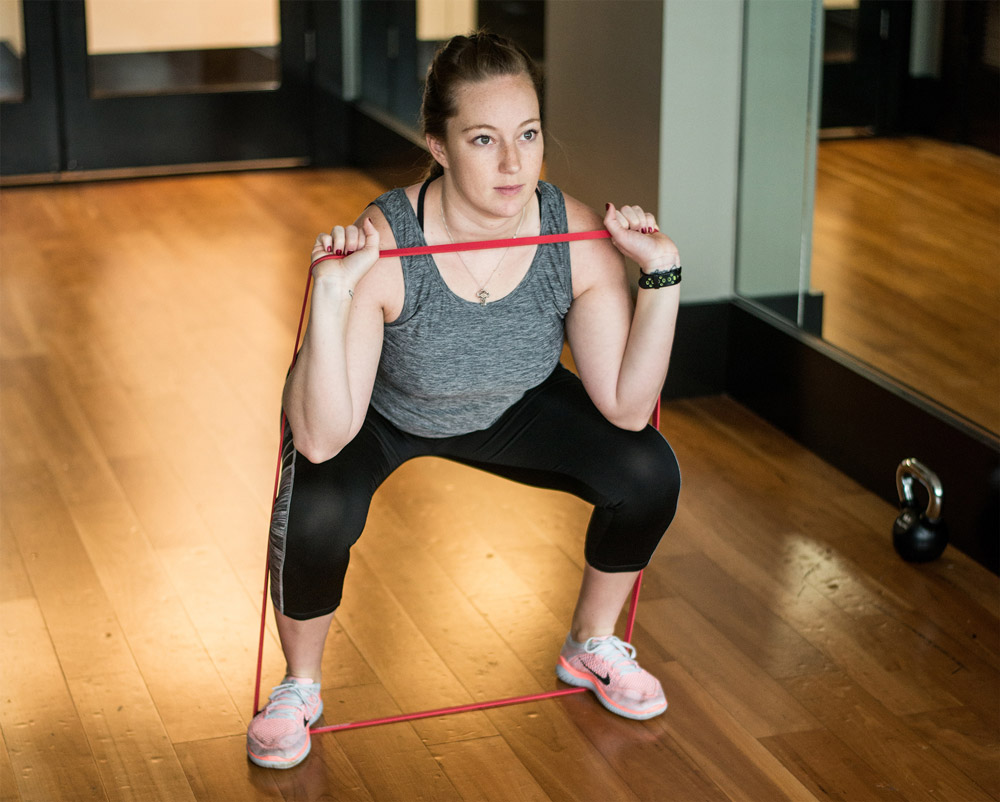
KNEE MUSCULAR ISSUES AND IMBALANCES
Muscular imbalances, weakness and tightness, especially through the thigh (quadriceps, hamstrings and adductor groups) can increase the risk of a variety of knee injuries. As a range of muscles attach around the joint of the knee, if there is excessive tightness or serious weakness through those maintaining the position of the joint, this can cause complications or serious injury. Examples include iliotibial band (ITB) tightness and quadriceps (Vastus Medialis Obliquus) weakness can contribute to patella dislocation.
It is therefore incredibly important to ensure that correct loading of the muscle occurs through exercise and if any issues do occur, to have them reviewed by a physiotherapist to remedy and advise on treatment before a lasting problem arises.
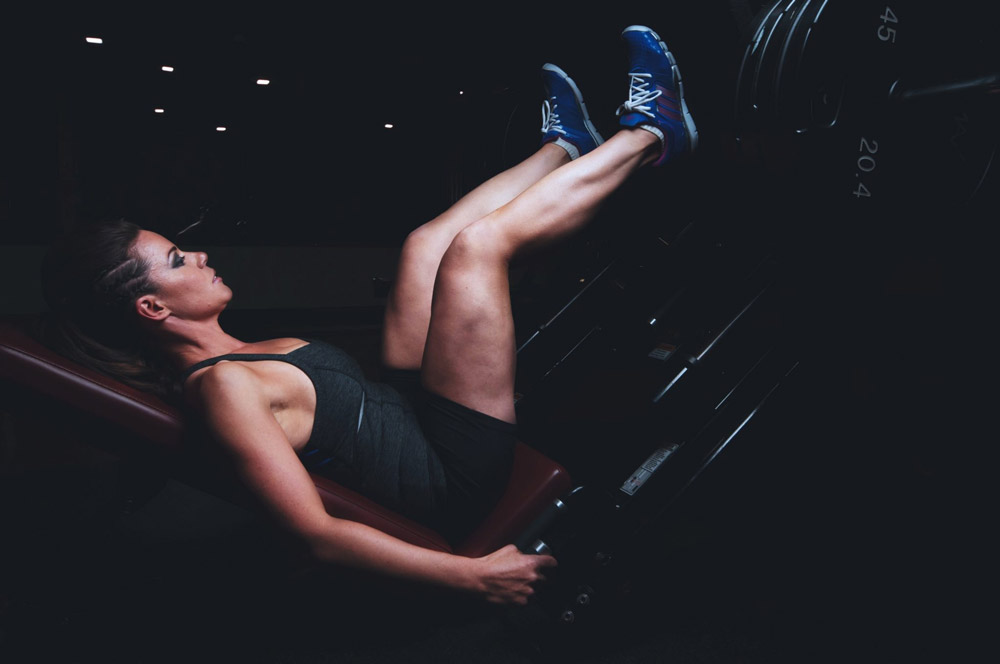
HOW CAN PHYSIOTHERAPY FOR KNEE INJURIES HELP ME?
Physiotherapy is incredibly important for these injuries to ensure proper and complete recovery. Though each injury will differ slightly, a physio can aid in making sure that there is a correct process of healing and work on a rehabilitation program that will allow you to execute full recovery goals in a timely manner to get you back to health as soon as possible. The treatment of exercises may include:
Exercise programs will be of key importance during rehabilitation for knee injuries. As it is a major movement centre, and important for stability to restore full function for work, sport and general living, the knee will require gradual reloading otherwise further complications can occur
An aspect of our service here at Pivotal Motion that is often overlooked, are the exercise classes we provide. Currently offered are an adolescent strength and conditioning class and a strength and balance class for our older clients. These classes aim to improve health and increase enjoyment of exercise, but also to teach exercise habits which will aid in activities of daily living and decrease injury risk for the future.
INJURY AVOIDANCE & RECOVERY OF THE KNEE
Even though the knee is designed to support up to five times the body’s weight, care must be taken. Whether weightlifting or moving house, correct lifting technique is essential for knee functionality. Similarly, warming up the joint before physical activity will also reduce the likelihood of injury. Correct loading and exercises such as squats and lunges can be used to strengthen the joint, particularly the ligaments and surrounding musculature, and prevent injury.
Likewise, knee physiotherapy consultations can assist in the recovery stages, regardless of the injury. If injured, rest will be the first recommendation, as further injury could occur due to the complexity of the knee joint.
If you suffer from knee pain, whether chronic or from a recent injury call us now on 07 3352 5116 or book online to start your road to recovery with our experienced and talented physiotherapy Brisbane team!

